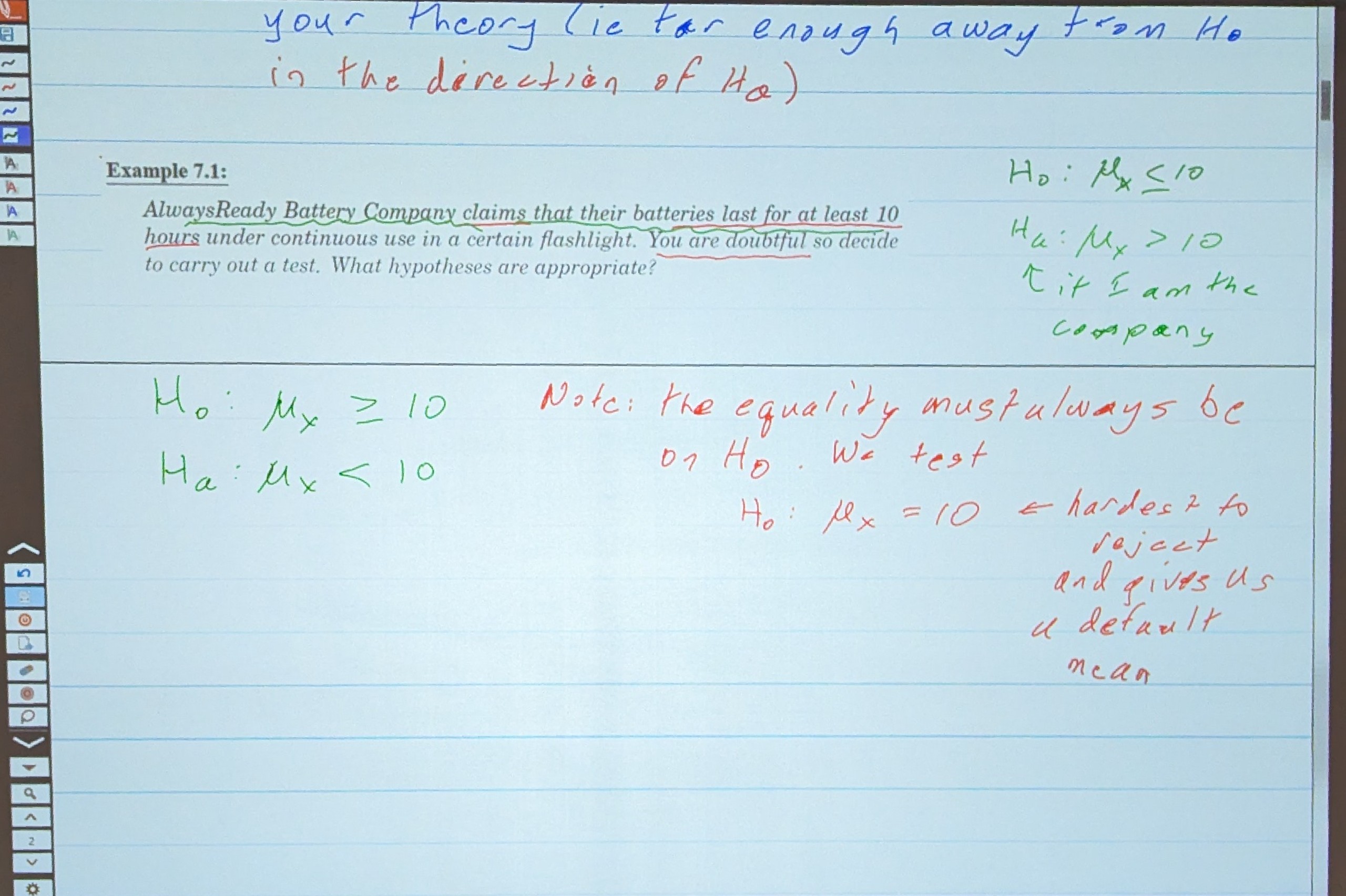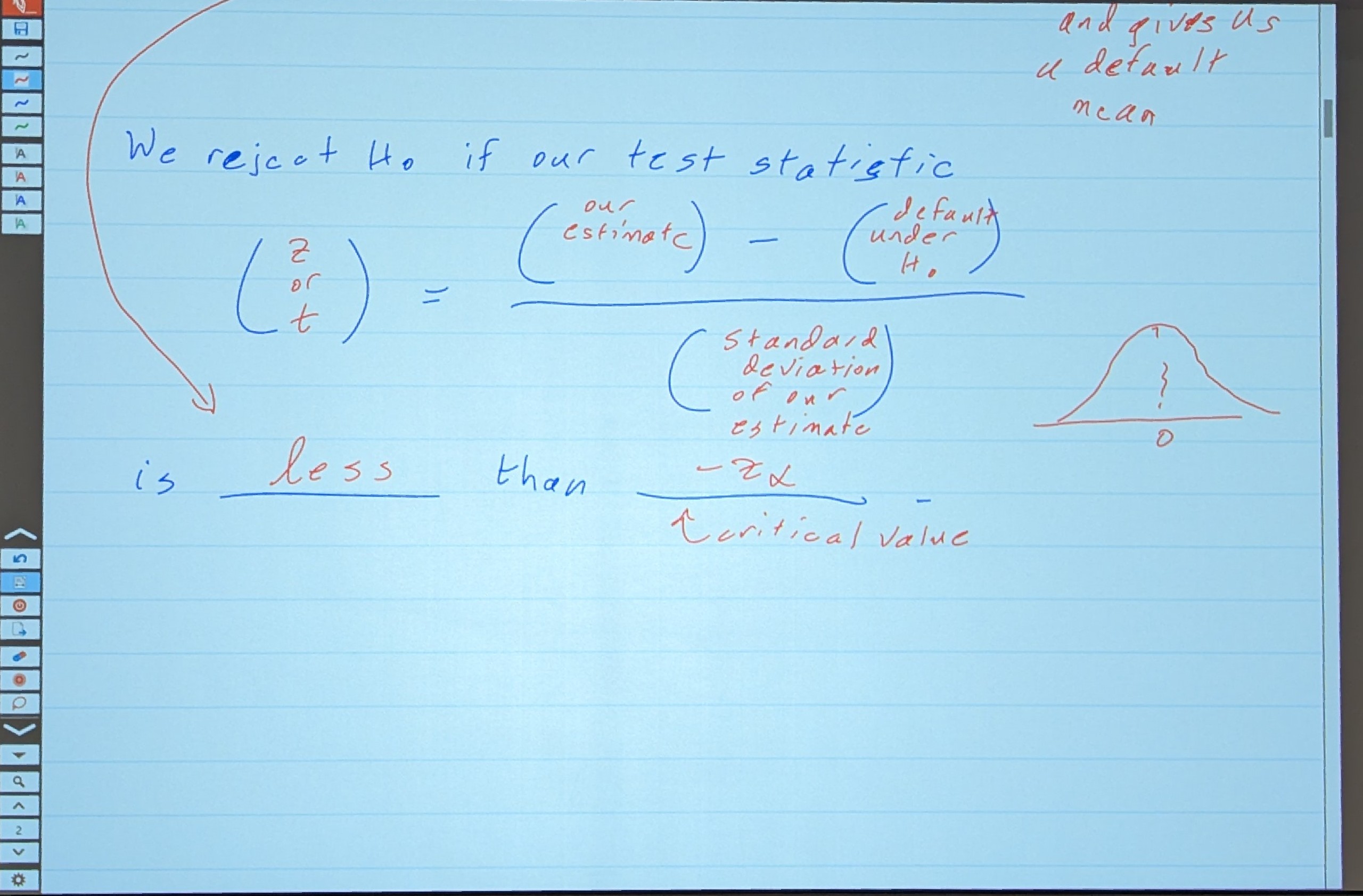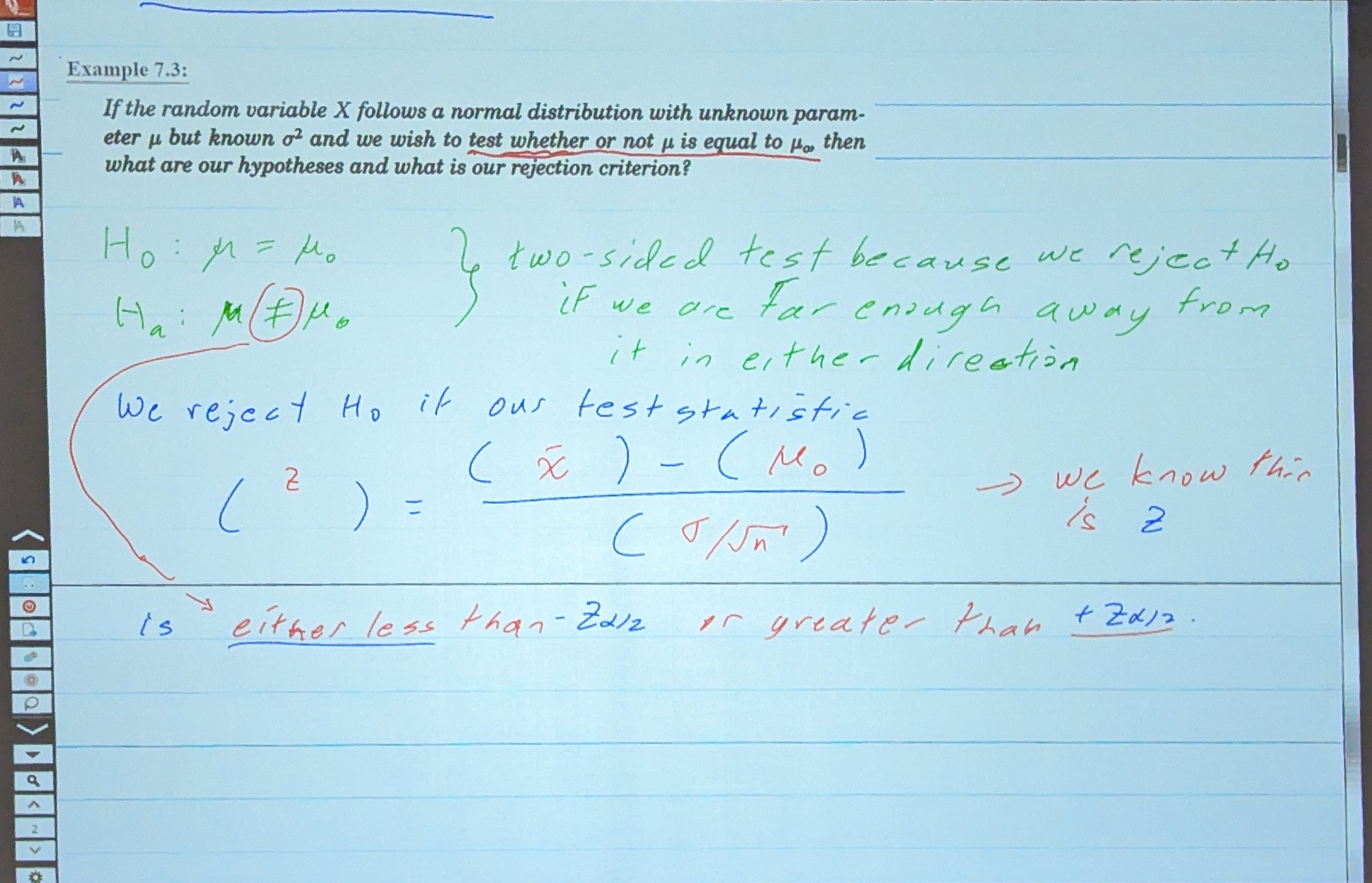Chapter 7
Hypothesis Tests:
A test of competing hypothesis.
- : Null hypothesis
- Default conditions
- Can never be proved. The test can never prove the null
- : Alternative Hypothesis
- What you are trying to prove
Examples:
-
Legal Justice System; Innocent until proven guilty (Innocent = ), (Guilty = ).
- If the evidence in far enough away from innocence, you are proven to be guilty at some level of confidence. Here, if you make a mistake in your alternative hypothesis, somebody goes to jail innocently
-
The Scientific Method
- = Current Theory (say the theory of general relativity right now).
- = Your new theory
- So you gather data, and if it sufficiently supports your theory, (i.e, far enough away from in the direction of )
Example 1
Note: The equality must always be on . We test (hardest to reject, and gives us default mean)


If so, we reject and conclude, with at least () confidence, that is correct.
Note: This is a one-sided test. (when we have a less than, or greater than ). We’d use or
Example 2 (Two sided test this time)
(Two sided. So we use

Types of Errors
-
Type 1: Rejecting when it is true
- P[Type 1 Error] =
- We choose this so choose to be small, but not too small. of 0.05 or 0.10 is selected
- P[Type 1 Error] =
-
Type 2: Failing to reject when it is false
- Problem: If is false, we do not know what is. Our tells us the mean by default, so that being wrong is a big problem
- P[Type 2 Error] = (harder to computer, so we’ll basically ignore this)
- This increases as decreases (again, why we don’t want to choose too small)
- P[Type 2 Error] = (harder to computer, so we’ll basically ignore this)
- Problem: If is false, we do not know what is. Our tells us the mean by default, so that being wrong is a big problem
P - Value
This is the value of at the boundary of rejecting
= The probability of observing a future test statistic at least as extreme as the one observed in the direction of
Example
Suppose : 0 : 20
and we have computed a test statistic
(this means that our *is 2.6 standard deviations away from : 20)
P-value (i.e. = = 2(
Small P-values support suggests that is false, and should be rejected. If is selected to be greater than the P-value, we reject
Large P-Values support